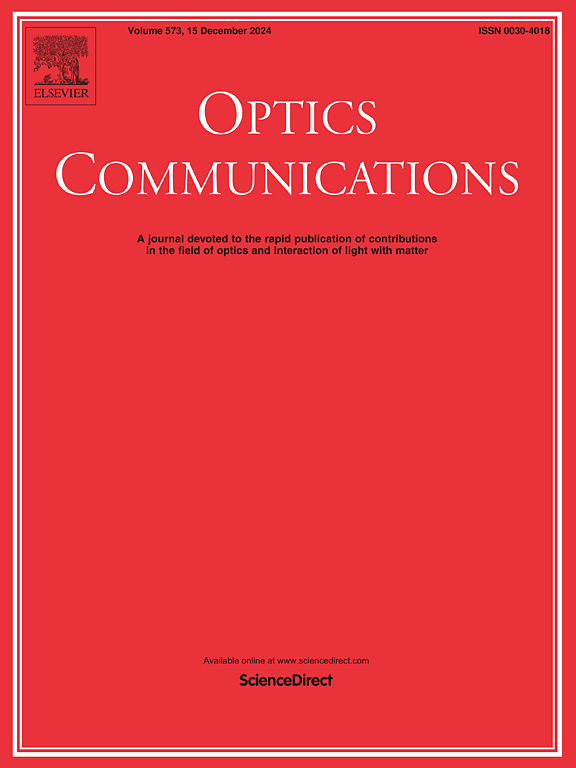Enhancing the performance of NOMA-based VLC systems using a proposed adaptive superimposed constellation Algorithm with an exact SER analysis
IF 2.2
3区 物理与天体物理
Q2 OPTICS
引用次数: 0
Abstract
Non-orthogonal multiple access (NOMA) is an impressive multi-access technology that enhances the spectral efficiency of visible light communication (VLC) systems. However, improved spectral efficiency might lead to performance reduction. To resolve this issue, this paper proposes an innovative approach termed the adaptive superimposed constellation algorithm (ASCA), which is intended for NOMA-based VLC systems. The proposed algorithm includes two fundamental methods: the optimal power allocation factor (OPAF) and adaptive M-QAM selection (AMS). The OPAF method determines the appropriate PA, ensuring non-overlapping decision regions for superimposed constellation symbols across different modulation orders supported by corresponding theoretical results. The AMS method dynamically selects the M-QAM modulation order for users, striking a balance between communication quality and data transmission rates. These methods collectively improve fairness among users, reduce the symbol error rate (SER), analyze limitations regarding the total number of users the system can serve, and evaluate the system's capacity to support multiple users effectively. This paper offers closed-form SER expressions for served users based on square QAM modulation and an imperfect successive interference cancellation (SIC) scenario. Theoretical analysis and simulations confirm the findings. The simulation results show that the proposed algorithm achieves better SER performance than other power domain (PD) NOMA schemes, making it a reliable and efficient solution for integrating NOMA into VLC systems.
求助全文
约1分钟内获得全文
求助全文
来源期刊

Optics Communications
物理-光学
CiteScore
5.10
自引率
8.30%
发文量
681
审稿时长
38 days
期刊介绍:
Optics Communications invites original and timely contributions containing new results in various fields of optics and photonics. The journal considers theoretical and experimental research in areas ranging from the fundamental properties of light to technological applications. Topics covered include classical and quantum optics, optical physics and light-matter interactions, lasers, imaging, guided-wave optics and optical information processing. Manuscripts should offer clear evidence of novelty and significance. Papers concentrating on mathematical and computational issues, with limited connection to optics, are not suitable for publication in the Journal. Similarly, small technical advances, or papers concerned only with engineering applications or issues of materials science fall outside the journal scope.
 求助内容:
求助内容: 应助结果提醒方式:
应助结果提醒方式:


